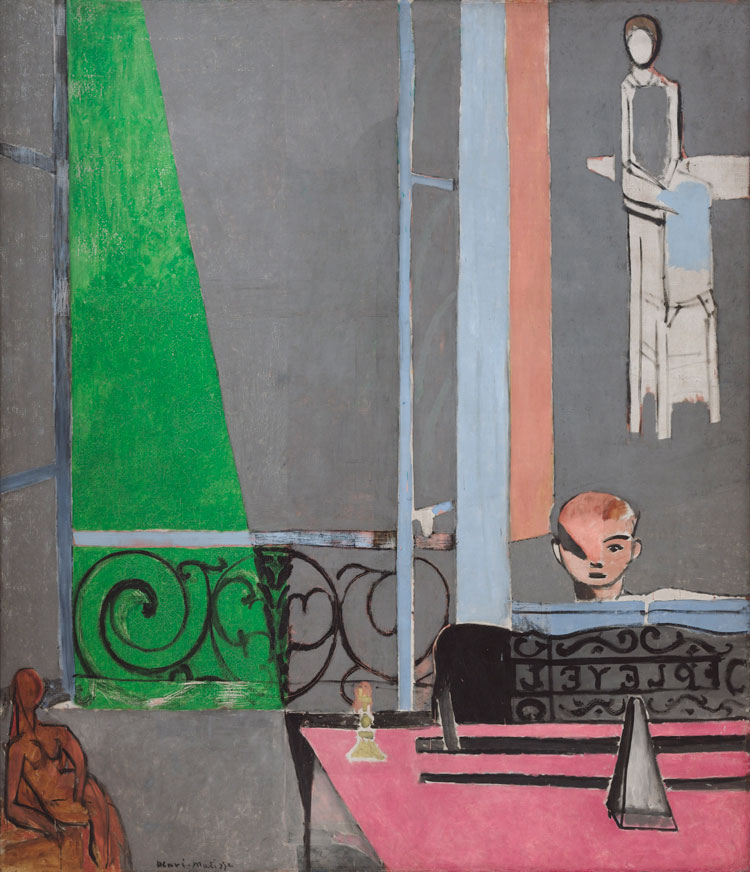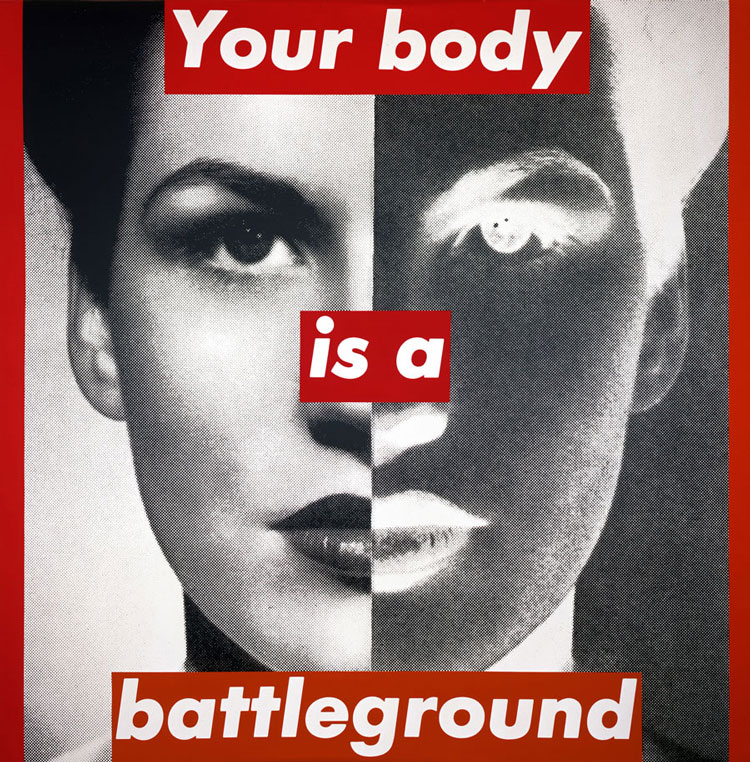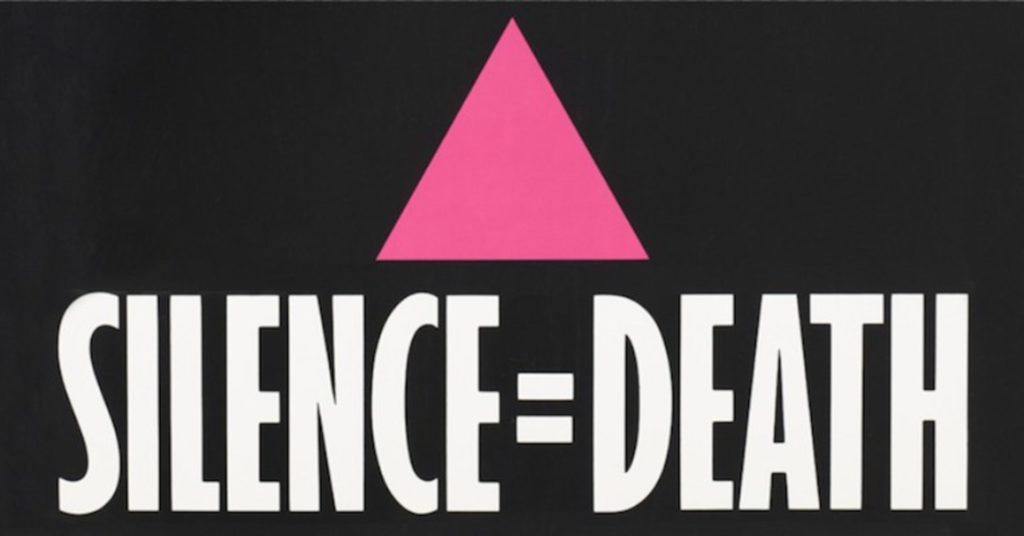Marilyn Minter (NA 2017) shares her sources of inspiration.
David Hammons, Untitled, 2000

It is a composite that speaks volumes about racism, privilege, class, and beauty. It hits all the bases of when art becomes transcendent.
Richard Tuttle, 31st Wire Piece, 1972

I saw this at the Whitney in my early 20s. I never knew art could look like this. The work is minimal but captivating at the same time. It showed me that simplicity can be powerful; “Wow, why didn’t I think of that?”
Robert Rauschenberg, Untitled (Early Egyptian), 1973

I saw this in my 20s at MoMA, when I was in graduate school. I had never seen an object painted so that it cast a color on the adjacent wall. It opened me up to the possibilities of what art can do.
Robert Gober, Untitled Shoe, 1990

This little, red, wax shoe felt like loss. So much art in the 90s was about the AIDS crisis; even objects that seemed unrelated had a narrative behind them.
Henri Matisse, The Piano Lesson, 1916

I saw a reproduction of this painting as a teenager and it was my first taste of Modernism, since I grew up in a cultural desert. It tipped me off that painting didn’t have to look like reality. I didn’t get it, but I knew I liked it.
ACT UP + Gran Fury


It was the first time I saw my generation of artists make a difference in politics. Bravo Gran Fury.
Wife Power, Loldiers, and the Klu Klux Klowns

After the election, I was so angry and depressed. But I figured out that the most powerful way to deal with the KKK, fascists, and neo-Nazis is to humiliate them. These hate groups are desperate to be taken seriously, so undercutting them with absurdity and humor seems far more effective than trying to fight them on their terms. Visit YouTube here to find footage of the “Loldiers,” and and the tuba player here. I find their forms of disruption hilariously effective.
D4D


After the 2016 US election, I joined Downtown for Democracy, a political action group founded by creative people to transform cultural influence into political power. I serve on the artists’ committee—we raise money for progressive causes to combat Trump’s dictatorial agenda by selling reasonably priced artist editions. Buy our stuff or volunteer at downtown4democracy.org.
Philip Guston, Evidence, 1970

He paints like God; he took abstraction and decided to get political with it. He painted the Klu Klux Klan and Richard Nixon; he made that hideous subject matter look amazing.
David Wojnarowicz, Untitled (Hujar Dead), 1988

His work is a really good example of my generation fighting back with imagery and words in the middle of the AIDS crisis and half of the population of the art world dying around us.
Barbara Kruger, Untitled (Your body is a battleground), 1989

She changed art history; she seamlessly combines imagery, politics, and poetry.
Jenny Holzer, Protect Me From What I Want, 1985

She concretizes poetry digitally into art.
Planned Parenthood and Cecile Richards’s Congressional Testimony

Planned Parenthood and its former president, Cecile Richards, who ran the organization from 2006 until April of this year, have been huge inspirations to me. I loved watching Richards’s 2015 testimony before Congress when she shut down Utah’s unctuous GOP representative Jason Chaffetz.

I have been a proud supporter of Planned Parenthood for a very long time. I made a suite of unofficial Planned Parenthood pins—all of the proceeds go directly to the nonprofit. You can buy them through Printed Matter’s website.
Arthur Jafa, Love is the Message, The Message is Death, 2016

Arthur Jafa’s genius and heartbreaking work is one of the most mesmerizing things I’ve ever seen. I couldn’t leave the room until I’d watched it ten times.
Christian Marclay, The Clock, 2010

Christian Marclay’s The Clock is a looped, 24-hour video montage of scenes from film and television that features clocks or timepieces. For a movie junkie like me, this is heaven on earth; I will never get tired of it.
Marilyn Minter (NA 2017) is an artist who lives and works in New York. Her work focuses on the idea of unconventional beauty. She has been the subject of numerous solo exhibitions around the world. In 2015, Minter’s retrospective Pretty/Dirty opened at the Contemporary Arts Museum, Houston, TX, and was shown in various museums, concluding at the Brooklyn Museum.
Reproduction, including downloading of ARS member works is prohibited by copyright laws and international conventions without the express written permission of Artists Rights Society (ARS), New York.

